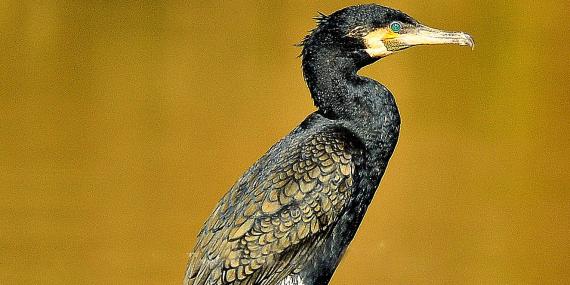Cormorants are large, dark waterbirds. They feed on fish, which they catch with their long, hook-tipped bills while swimming underwater. Cormorants nest on low cliffs around the coasts, or in colonies in trees on lakes and flooded gravel pits inland. Cormorants can often be spotted perched on a rock or bank with their wings held stretched out. In this stance, they are able to dry their feathers off which are not waterproof.
Historically, the Cormorant was heavily persecuted because it was seen as a greedy and sinister bird; as good fishers, they came into conflict with anglers. But they survived here and are now regularly seen both on our coasts and inland, including on man-made lakes, flooded gravel pits and reservoirs. The Wildlife Trusts work with planners, water companies and landowners to help make our man-made waterways and waterbodies as good for wildlife as they are for people. By working together, we can create a 'Living Landscape': a network of habitats stretching across town and country, allowing wildlife to move about freely and people to enjoy the benefits of nature. Support this greener vision for the future by joining your local Wildlife Trust.
